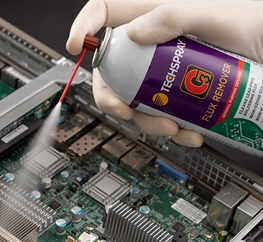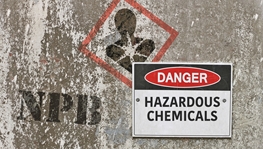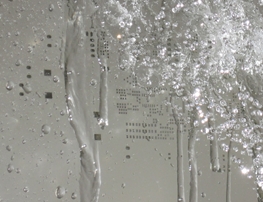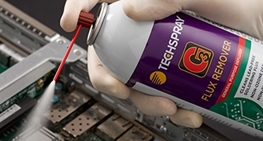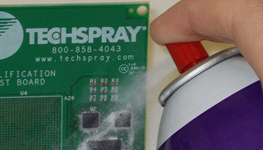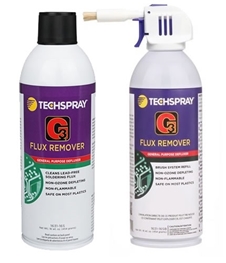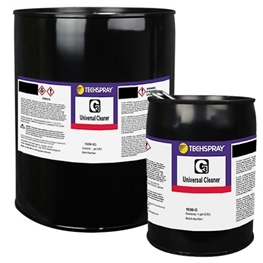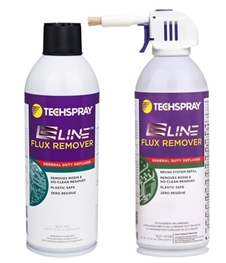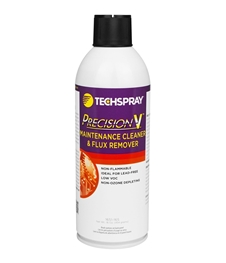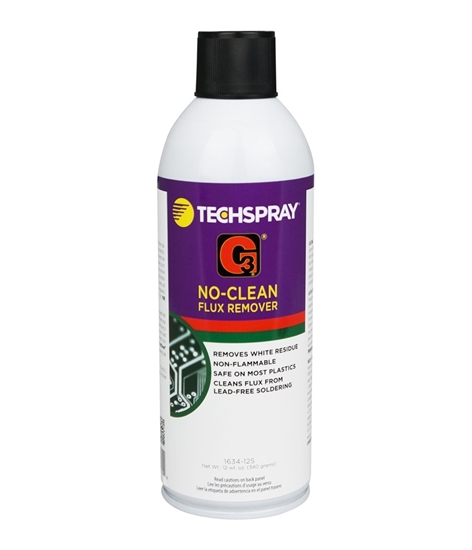
G3 No-Clean Flux Remover
Strong, fast-acting & nonflammable no-clean flux remover spray
FAQ's
When should I clean off no-clean flux when soldering?
If it is not fully activated (brought up to solder temperature), you should not leave any ionic residue behind. You might have to clean if...
1. Flux is being used so liberally that it all isn’t being heated along with the solder.
or
2. The non-ionic residue can impede with the function of the devise either short-term or long-term.
1. Flux is being used so liberally that it all isn’t being heated along with the solder.
or
2. The non-ionic residue can impede with the function of the devise either short-term or long-term.
How do you know the safe exposure limit of a degreaser, contact cleaner, or flux remover?
The personal hazard associated with a solvent is often defined using Threshold Limit Value (TLV), which is the recommended average exposure in an 8-hour day, 40 hour work week. The lower the TLV of a particular substance, the less a worker can be exposed to without harmful effects. TLV is stated on the SDS of chemical products, in additional to recommended personal protection equipment (or PPE). The threshold limit value of a solvent is generally set by the American Conference of Governmental Industrial Hygienists (ACGIH). The unit of measure is Parts Per Million (PPM).
Articles
Flux Remover Video How-To Guide
Today, I’m going to take you through the best practices for cleaning printed circuit boards with a flux remover. A flux remover cleans off flux left behind after the soldering process. That’s important because flux residue can cause corrosion or create what’s called “dendrites”, which are ionic part...
Read This Post
EPA Considers 1-Bromopropane (n-Propyl Bromide, nPB) an “Unacceptable Risk” for Degreasing
In the report “Nontechnical Summary of the Risk Evaluation for 1-Bromopropane (n-Propyl Bromide)”, the US Environmental Protection Agency (EPA) has determined that this solvent “presents an unreasonable risk for 16 conditions of use.” Those conditions of use include: Industrial and consumer use for ...
Read This Post
Isopropyl Alcohol (IPA) Replacements for Electronic Assembly and Repair
Isopropyl alcohol, also referred to as IPA, isopropanol, and 2-propanol, may be in short supply for the coming weeks or months because of the COVID-19 (Novel Coronavirus) pandemic. This will be particularly challenging for companies using IPA for flux removal, stencil cleaning, and industrial degrea...
Read This Post
How to Clean Flux From Under Low Stand-Off QFN Components
Because of the low stand-off of QFN components (around ½-1 mil) common on printed circuit boards (PCB), it is very difficult to get enough contact time with a cleaner to break through the flux dam and break down all the residues. For proper cleaning, the following impacts effectiveness of the proces...
Read This Post
5 Best Practices for Cleaning High Reliability PCBs
Aerosol cleaning prevents the introduction of new contaminants. While there are some obvious pros of aerosol cleaning, questions remain as to whether this method of benchtop cleaning can consistently and reliably clean a circuit board. This paper examines the role that different variables play in ae...
Read This Post
You did not finish submitting your information to request a sample

